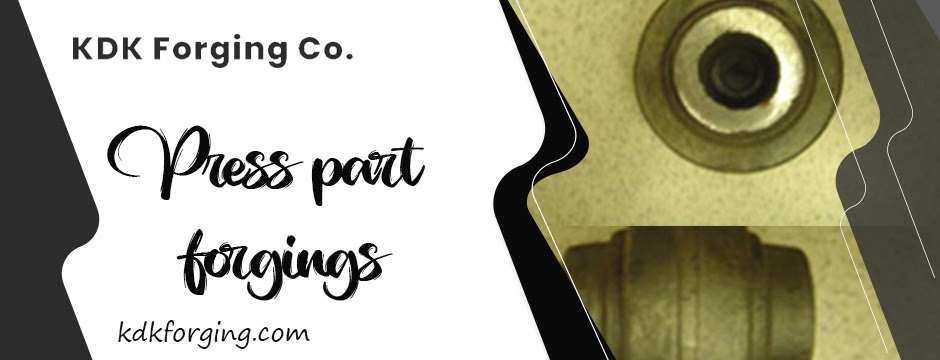An overview of the upset forging process by KDK Forging Co.
A metal bar is heated locally during upset forging, and the bar is then tightly held using specialized tooling while pressure is applied to the end of the bar in the direction of the axis to distort it.
Long pieces with forged ends can be produced using this method. As opposed to the electro-upsetting method, upset forging does not permit as much variance between the original bar diameter and the forged head diameter. However, because the deformation is done in stages, it does enable the creation of considerably more intricate shapes.
Uses
Shafts, screws, piston rods, and other lengthy parts for the automobile industry, public works, aviation, and many other fields of application are produced using upset forging.
Production
Upset forging can produce large quantities of elongated pieces as a continuation of hot forging. The creation of axisymmetric pieces with complex geometry is made possible by the head's gradual, incremental deformation.
Heating
At the very end, the slug is heated locally. Several heating techniques are possible, depending on what the finished product needs:
ELECTRIC OR GAS OVEN
Heating INDUCTION
Forging and finishing
The heated slug is immediately forged in a press.
The billet will be held in place by sophisticated tooling that will apply pressure in the direction of its axis. Like the example mentioned earlier, progressive deformation enables excellent dimensional control of the items produced.
After being forged, the object is cooled in a cooling tunnel, either in natural air or the environment, before being sent for heat treatment and machining.
The method of moulding a metal sandwiched between two dies using mechanical or hydraulic pressure is known as press part forging. A forging press, a device that gradually exerts pressure on the forging dies, is typically used to do press forging.
Characteristics
Grain-like imperfections found between grains make up steel. These grains and impurities undergo deformation during forming processes in the steel mill and the forge. The entire thing lengthens in the direction of the deformation, creating what is referred to as the metal's "grain flow." Companies use the term "worked iron" to describe a material whose deformation rate is proportional to a part's initial and end sections.
The direction of this grain flow significantly impacts a part's mechanical strength. With the right knowledge, businesses may choose the best fibre drawing orientation for the application and the mechanical forces the component will experience.
Why take services from KDK?
Their facility manufactures upset and closed die forgings to the customer's design and specifications.
After the forging process, many of their parts are heat treated. Services for normalizing, hardening, quenching and tempering are available.
KDK offers machining services for forged components, giving clients a unique solution.
KDK offers a selection of unique fabrications for customers searching for a modular solution.
If you want more information on the upset forging process, you can shift to the official website of KDK Forging Co. They have been in the industry for the last 73 years and have produced over 10 million forgings.
-------------------------------------------------------------------------------------------------
Address: K.D.K. Upset Forging Company
2645 W. 139th St.
Blue Island, IL 60406
P: (708) 388-8770





Comments
Post a Comment